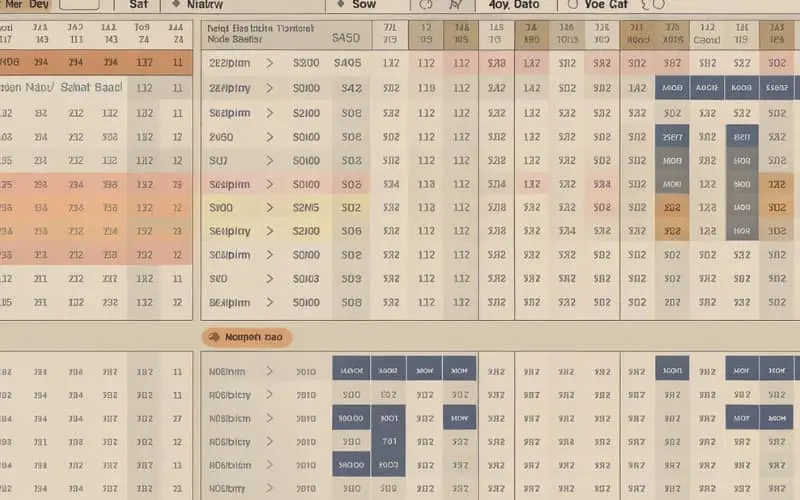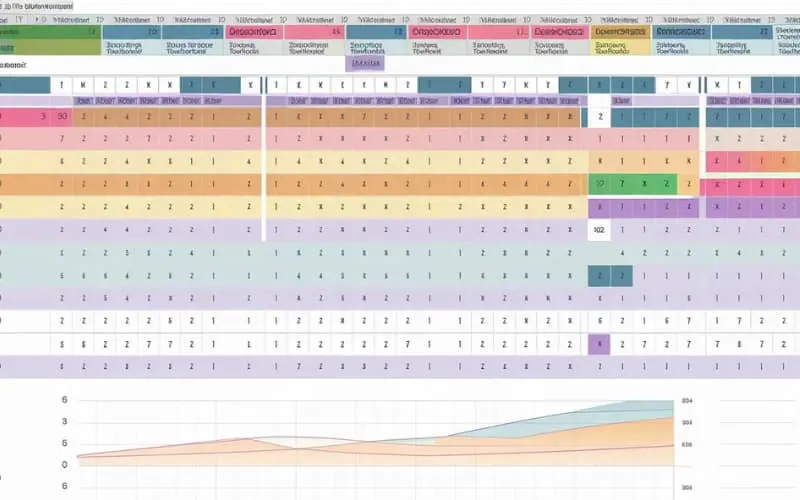
Predicting lottery numbers from past draws has always captivated people with the promise of life-changing rewards, and many players seek ways to improve their chances of winning ww lottery sambad. One method that has gained popularity is predicting lottery numbers from past draws in Excel. While winning the lottery is ultimately a game of chance, analyzing historical data using Excel can help you identify patterns and trends that might increase your odds of selecting the right numbers. In this post, we’ll guide you through the process of using Excel to predict lottery numbers based on past draws.
The Power of History: How Past Data Can Help Predict Future Numbers
When it comes to predicting lottery numbers, many players believe that history can reveal useful insights. The idea is simple: if certain numbers appear more frequently in the past, they might be more likely to appear in future draws. While lottery results are designed to be random, human psychology and statistical analysis suggest that certain patterns might emerge over time. By analyzing historical lottery data, you can uncover these patterns and use them to make more informed decisions when choosing your numbers.
In Excel, this analysis process becomes even more powerful, allowing you to efficiently process large sets of historical data to identify these patterns.
Step 1: Collecting Historical Data
The first step in predicting lottery numbers from past draws in Excel is to gather the data. Most lottery websites provide past draw results, which can typically be downloaded in spreadsheet format. You’ll want to gather as many past draw results as possible, as this will give you a larger dataset to work with and improve the accuracy of your predictions.
Once you’ve collected the data, organize it in Excel so that each row represents a different lottery draw. The columns will contain the numbers drawn for each event. A well-organized dataset is key to ensuring that your analysis is accurate and effective.
Example of a dataset in Excel:
| Date | Number 1 | Number 2 | Number 3 | Number 4 | Number 5 | Number 6 |
| 01/01/2023 | 5 | 10 | 14 | 22 | 30 | 35 |
| 01/02/2023 | 3 | 11 | 19 | 25 | 32 | 38 |
| 01/03/2023 | 7 | 12 | 18 | 23 | 31 | 36 |
| … | … | … | … | … | … | … |
With this dataset in place, you can now begin your analysis.
Step 2: Frequency Analysis of Numbers
One of the most common techniques for predicting lottery numbers from past draws in Excel is frequency analysis. By tracking how often each number has appeared in past draws, you can identify hot and cold numbers kerala lottery result today live tv channel list. Hot numbers are those that have appeared most frequently, while cold numbers are those that have appeared less often.
To perform frequency analysis in Excel, use the COUNTIF function, which allows you to count how many times a specific number appears in your dataset.
Example formula to count the frequency of a number:
=COUNTIF(range, number)
Here, range refers to the range of cells where the numbers are located, and number refers to the specific number you want to count. Once you’ve applied the formula, you can sort the results to identify which numbers have been drawn the most and least often.
Hot numbers are often seen as more likely to appear in future draws, while some players prefer cold numbers, believing that they are due to appear soon. However, keep in mind that lotteries are designed to be random, so these patterns are not always reliable.
Step 3: Tracking Overdue Numbers
Another technique for predicting lottery numbers from past draws in Excel is tracking overdue numbers. These are numbers that haven’t appeared in a while and are believed to be statistically “due” for a draw. Many players consider overdue numbers when selecting their picks, assuming that the frequency of their absence increases the likelihood of their appearance in future draws.
To track overdue numbers in Excel, you can calculate the number of draws since each number last appeared. This can be done using a simple subtraction formula to find the gap between the most recent draw and the previous draw in which a number appeared.
Example formula for overdue numbers:
=TODAY() – last_appeared_date
This formula subtracts the last appearance date of a number from today’s date to calculate how many draws have passed since it last appeared. Numbers with larger gaps might be considered overdue.
Step 4: Identifying Number Combinations
In addition to analyzing individual numbers, you can also use Excel to identify frequently occurring combinations of numbers. Some players believe that certain sets of numbers have a higher chance of appearing together in future draws. To find these combinations, you can use Excel’s PivotTables to group numbers by draw and identify recurring sets.
A PivotTable can help you group your data by specific criteria, such as the combination of numbers in each draw. By analyzing the most common combinations, you can make more informed decisions when selecting multiple numbers.
Step 5: Using Excel’s Random Number Generator
While analyzing historical data is valuable, sometimes players simply want a fresh, random selection of numbers. Excel can help with this by using the RANDBETWEEN() function, which generates random numbers within a specified range.
Example formula for generating random lottery numbers:
=RANDBETWEEN(1, 50)
This formula will generate a random number between 1 and 50, 82 lottery download apk similar to how lottery numbers are drawn. You can use this function to create your own set of random lottery numbers based on the data you’ve analyzed.
Step 6: Refining Your Strategy
Once you’ve performed the above steps and gathered insights from your data, it’s important to refine your strategy over time. Regularly update your dataset with the latest results, track the performance of your predictions, and adjust your approach based on what you observe.
Predicting lottery numbers from past draws in Excel can be a fun and engaging way to approach the lottery. However, always remember that lottery draws are designed to be random, and no strategy can guarantee a win. Play responsibly and enjoy the process!
Conclusion
While predicting lottery numbers from past draws in Excel cannot guarantee success, it can provide a data-driven approach to selecting your numbers. By analyzing frequency, overdue numbers, and combinations, you can make more informed predictions and increase your chances of selecting winning numbers. Remember to keep refining your strategy and enjoy the experience, as the lottery is ultimately about fun and excitement. Happy predicting!


